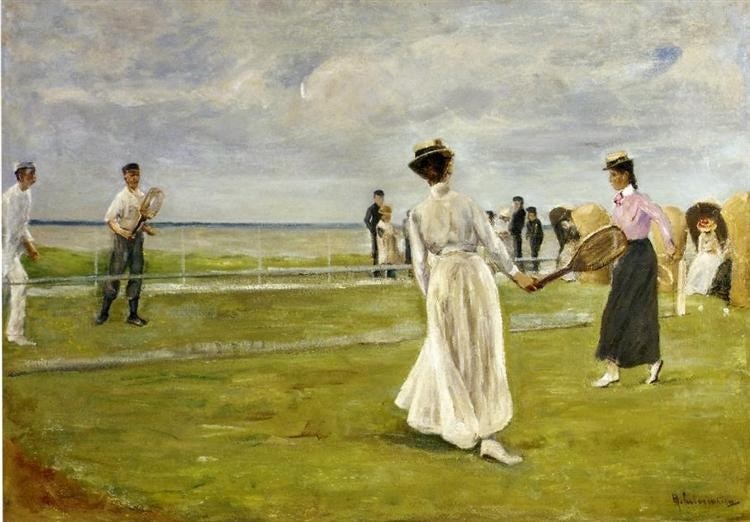Jannik Sinner’s triumph as the number one in the world tennis rankings is overwhelming. The excitement for the sport in white reemerges powerfully, inviting us to retrace its origins, its memorable protagonists, and the matches that have shaped its legend.
From the first challenges of Jeu de Paume in the lively French courts, tennis is an extraordinary odyssey that has crossed seas and continents to land on the green courts of Wimbledon. This is the stage of the most prestigious tournaments and legendary champions such as Adriano Panatta, Bjorn Borg, John McEnroe, Pete Sampras, Roger Federer, Rafael Nadal, Novak Djokovic. However, these are just a few of the names that have written the history of tennis, giving the audience unforgettable matches and breaking exceptional records.
Tennis is much more than a sport of toil and backhands. It is an epic that unfolds between past, present, and future, and weaves together stories of passion, sacrifice, triumphs, and art. Indeed, it is especially an art form, as illustrated by Il Ragazzo con pallacorda (‘the boy with the tennis racket’), an oil on canvas of rare iconography, representing a precious piece in the work of Michele Desubleo. He was a refined Flemish painter who became an Italian citizen who was counted among the best of the seventeenth-century Bolognese school.

The choice of this theme – at the time considered a mere hobby – reveals Desubleo’s sensitivity to the new trends that were animating society at that time. Sport, in fact, was assuming an increasingly central role, embodying values of strength, courage, and competition that captivated the masses.
Desubleo did not merely portray a simple game but captured the essence of this changing phenomenon. The boy is not just a player but a modern hero, a symbol of vigorous and ambitious youth. His statuesque pose, his proud and determined gaze, recall the classical ideals of heroism, reinterpreted in a Baroque style. Desubleo did not succumb to mere athletic celebration. The Caravaggesque light, skillfully modulated, creates a dynamic atmosphere full of contrasts, amplifying the emotional tension of the scene. The shadow envelops the young man in an aura of mystery, suggesting strength through the painterly surface and the heroic setting.
In questo gioco di rimandi e allusioni, Desubleo dimostra la sua profonda conoscenza della natura umana e la sua capacità di cogliere le contraddizioni del suo tempo.
The work, in fact, can be related to the tragic event that turned Caravaggio’s life upside down, a legendary figure for Desubleo during his early Roman years: the duel in the tennis court that cost Ranuccio Tomassoni his life. The racket held by the boy thus takes on a disturbing meaning, becoming an emblem of the violence and fragility lurking behind the hero’s mask.

In this interplay of references and allusions, Desubleo demonstrated his deep understanding of human nature and his ability to capture the contradictions of his time. Il Ragazzo con pallacorda thus stands as a historical document of extraordinary value, offering us a vivid glimpse into seventeenth-century society and its complex dynamics.
Desubleo, born Michel Desubleay, was trained in his homeland with Abraham Janssens and refined his skills in Rome alongside his half-brother Nicolas Regnier, a proponent of elegant and literary Caravaggism. His talent led him to secure prestigious commissions from the Grand Duke of Tuscany and the Este family of Modena. After a productive decade in Venice, rich with works for churches of the city, he settled in Parma, where he worked for the churches and the Farnese family.
Il Ragazzo con pallacorda represents an exemplary synthesis of Desubleo’s artistic journey, where the Caravaggesque lesson blends with classical influences and the impact of Guido Reni, in whose workshop the painter worked for a long time. The result is a personal style characterized by excellent naturalistic rendering, a skillful use of light and shadow, and deep psychological introspection.
Desubleo’s work invites us to look beyond the surface of formal beauty and appreciate its deep complexity. It is not merely a portrait of a young athlete, but an allegory of the society of his time, with its aspirations, contradictions, anxieties, and hobbies. Desubleo’s masterful brushstrokes capture the essence of a transformation, infusing the figure with an aura of dynamism and nobility. The meaning of the painting extends beyond its brilliant artistic value; it serves as a historical document, capturing the infancy of sport as a social force. Tennis, with its competitive spirit and aesthetic beauty, has won the hearts of millions worldwide.
In this work, as in many others, art and sport converge, celebrating human greatness and the relentless search for perfection.
Opening image: Michele Desubleo, Ragazzo con Pallacorda (oil on canva, cm 110×70 ca.), '600

